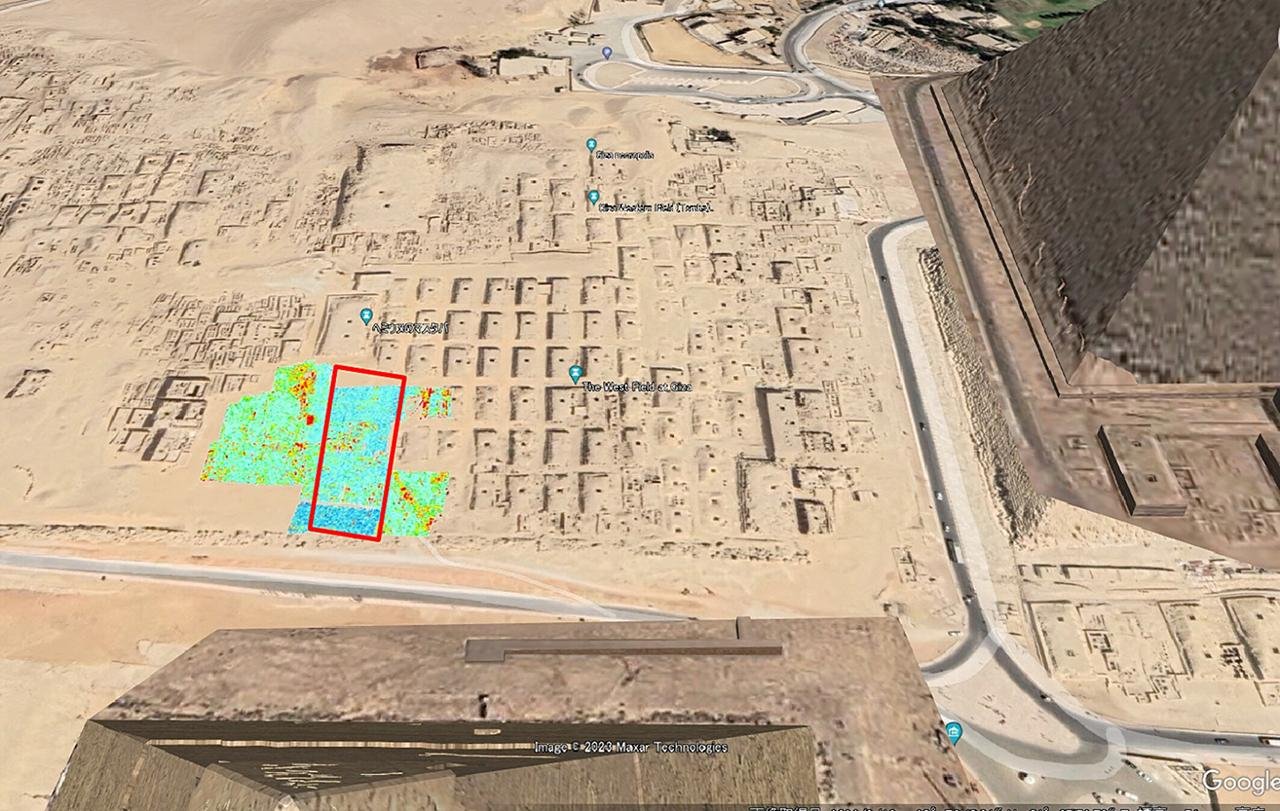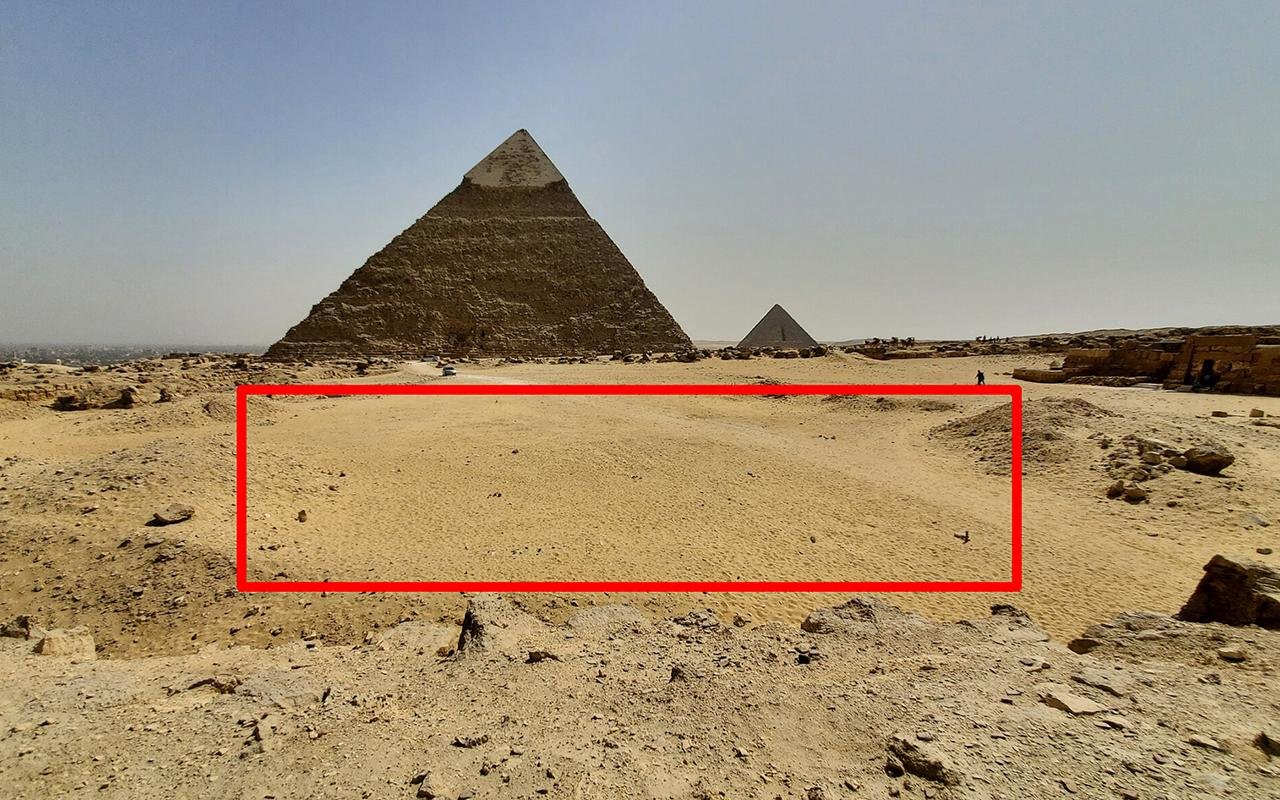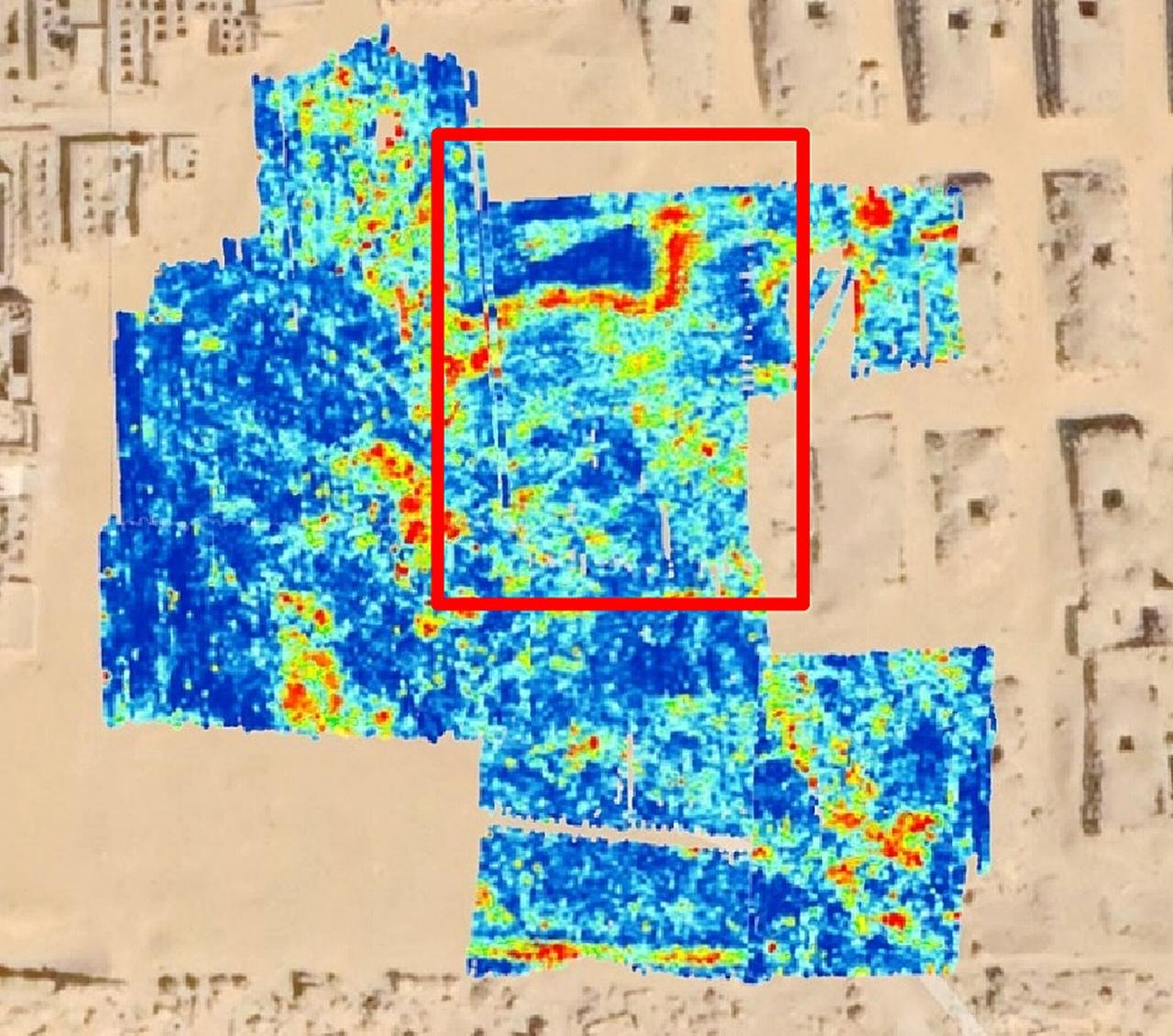A geophysical study conducted by archaeologists from Higashi Nippon International University, Tohoku University, and Egypt’s National Research Insтιтute of Astronomy and Geophysics (NRIAG) has unveiled the presence of an enigmatic L-shaped structure and intriguing anomalies buried beneath the surface of the Western Cemetery, also known as the Giza West Field.
 Location of the survey area projected on Google Maps. The red rectangle shows the area of the initial survey. The colour figure shows the horizontal profile of GPR. Credit: Sato et al., Archaeological Prospection (2024)
Location of the survey area projected on Google Maps. The red rectangle shows the area of the initial survey. The colour figure shows the horizontal profile of GPR. Credit: Sato et al., Archaeological Prospection (2024)
The Western Cemetery, situated on the Giza Plateau west of the Great Pyramid of Giza, has long been recognized as a significant burial ground for members of the royal family and high-ranking officials. Characterized by its mastabas—rectangular tombs with flat roofs and burial chambers below—the cemetery holds a prominent place in Egypt’s ancient history.
Utilizing cutting-edge geophysical technologies including ground-penetrating radar (GPR) and electrical resistivity tomography (ERT), researchers embarked on a comprehensive survey of the Western Cemetery. Over a period spanning from 2021 to 2023, these advanced techniques revealed a series of anomalies beneath the sand.
 The red rectangle shows the approximate location of the initial survey area. Credit: Sato et al., Archaeological Prospection (2024)
The red rectangle shows the approximate location of the initial survey area. Credit: Sato et al., Archaeological Prospection (2024)
At the heart of this discovery lies an L-shaped structure measuring approximately 33 by 49 feet, situated at a depth of roughly 6.5 feet below the surface. Filled with sand, this enigmatic feature presents a puzzle for archaeologists, who speculate that it may have functioned as an entrance to a deeper, subterranean complex. Further investigations uncovered a larger anomaly, approximately 33 by 33 feet in size and extending to depths of up to 33 feet below ground level.
 Close-up of the L-shaped object. Credit: Sato et al., Archaeological Prospection (2024)
Close-up of the L-shaped object. Credit: Sato et al., Archaeological Prospection (2024)
While the exact purpose of the structures remains unknown, the researchers propose several possibilities. Motoyuki Sato of Tohoku University suggests, “It could be a part of artificial objects, because the L-shape cannot be created in natural geological structures.” Moreover, the team believes that the anomalies could indicate the presence of vertical walls of limestone or shafts leading to a tomb structure.
As the researchers conclude, “The results of our GPR and ERT survey point to the possibility of the presence of archaeological remains… It is important that they must be promptly excavated to establish their purpose.”
More information: Sato, M., Saito, R., Abbas, A. M., Mesbah, H., Taha, A., Gaweish, W. R., … Yoshimura, S. (2024). GPR and ERT exploration in the Western Cemetery in Giza, Egypt. Archaeological Prospection. doi:10.1002/arp.1940





